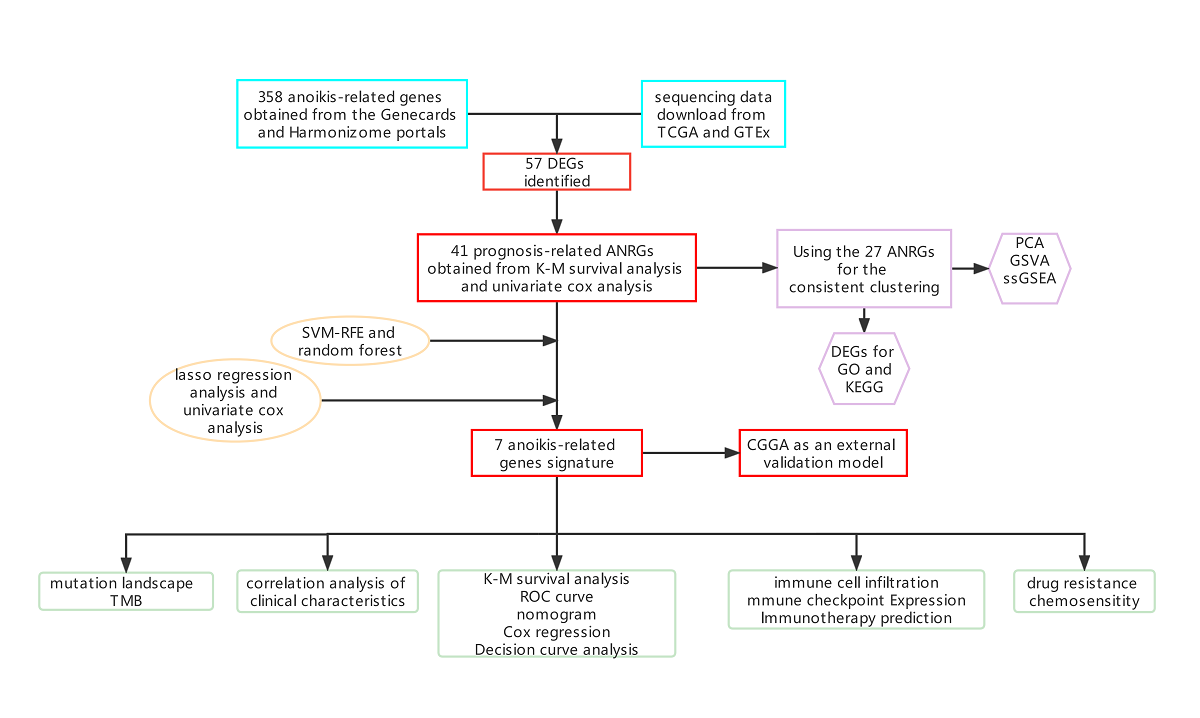Low-grade glioma (LGG) is a highly aggressive disease in the skull. On the other hand, anoikis, a specific form of cell death induced by the loss of cell contact with the extracellular matrix, plays a key role in cancer metastasis. In this study,anoikis-related genes (ANRGs) were used to identify LGG subtypes and to construct a prognostic model for LGG patients. In addition, we explored the immune microenvironment and enrichment pathways between different subtypes. We constructed an anoikis-related gene signature using the TCGA cohort and investigated the differences in clinical features, mutational landscape, immune cell infiltration, etc. between different risk groups. Kaplan-Meier analysis showed that the characteristics of ANRGs in the high-risk group were associated with poor prognosis in LGG patients. The risk score was identified as an independent prognostic factor. The high-risk group had higher immune cell infiltration, tumor mutation load, immune checkpoint gene expression, and ICB treatment response. Functional analysis showed that these high- and low-risk groups had different immune statuses and drug sensitivity. Risk scores were used together with LGG clinicopathological features to construct a nomogram, and DCA analysis showed that the model could enable patients to benefit from clinical treatment strategies.

